
02 Nov Art Passport #5: Inspiring Portraits from Scotland-Part 1
By Barbara K. Stump, MA
Warriors, wizards, and writers… oh my! Scotland is a country filled with pride for their strength and courage to stand up against all odds. To rise again, despite defeat, and come back stronger. The stories of resilience seemed to be an underlying theme as I learned more about this beautiful country. I found the people who shaped the history in Scotland were inspiring for their sense of grit. Angela Duckworth, a research psychologist and professor at the University of Pennsylvania, states, “Grit is about having what researchers call ‘ultimate concerns,’ a goal you care about so much that it organizes and gives meaning to almost everything you do. And grit is holding steadfast to that goal even when you fall down.” In this blog, I will share a few of my favorite Scots and how their actions painted portraits of determination to move their lives forward during oppressive and difficult times.
Probably, most of you have heard of the movie Braveheart starring Mel Gibson. Possibly, you already knew it was based on a real Scottish hero. Did you also know most of the movie is not historically accurate? The Scottish National hero, William Wallace, is depicted as a man larger than life, and fearless, in Braveheart. This is the image our Scottish tour guides painted as well. However, our guides also shared that many eras of Scotland are portrayed inaccurately during the same time period in this movie. Perhaps, we could draw a correlation with Taylor Swift’s “The Eras Tour” and how Hollywood took all things Scottish and mixed them up to create the Braveheart movie?…Slight chuckle and segue here. Anyhow, back to William Wallace. Mel Gibson, who portrays William Wallace, is shown with a blue painted face and wearing a kilt. Although, during the true era of William Wallace the fighting Scots did not paint themselves or wear kilts. The idea was most likely taken from an earlier group: the Picts. The Picts lived in Scotland during the 6th and 9th centuries, and are said to have battled wearing war paint all over their bodies. Likewise, kilts were not invented until the 17th century, and William Wallace lived in the 13th century. Truthful to history though, William Wallace, was brutally executed—hung, drawn, and quartered, by the British for treason. He was a very brave man, a patriot, and a martyr, who fought for the freedom for his country. Wallace is quoted as saying, “Every man dies, not every man really lives.” Wallace is immortalized at the National Wallace Monument, located in Stirling, Scotland. It was designed by Scottish Architect, John Thomas Rochead, and completed in 1869. I visited the iconic monument and was able to climb a very narrow stairway to the top for an incredible view! It was definitely worth the effort!
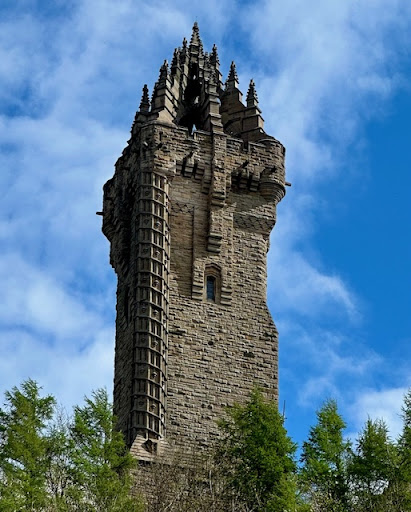
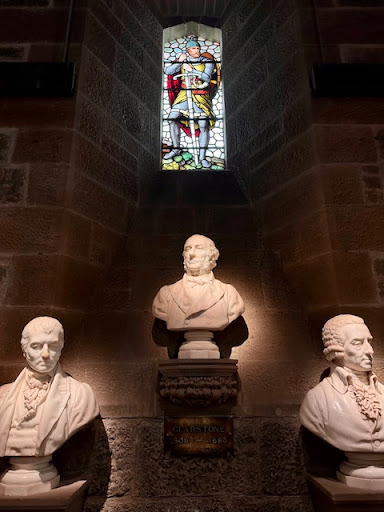
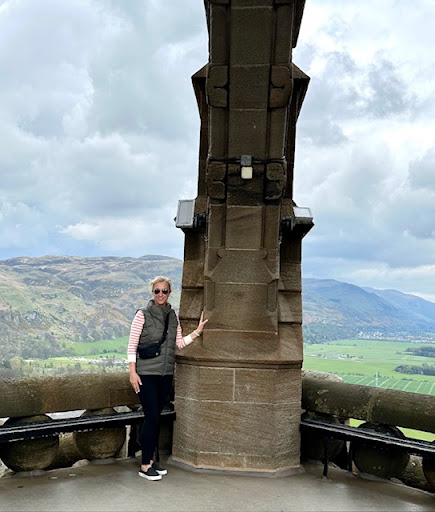
Another interesting creative liberty Hollywood took in the movie, Braveheart, was using the title of the movie as a moniker for William Wallace, when in all actuality it belonged to another Scot, Robert the Bruce. The tour guides also shared that these two men never met each other. When Robert the Bruce was on his deathbed, he asked one of his knights to take his heart on a crusade for him. An urn containing Robert’s heart was taken into battle in Spain and thrown at the Muslims by a knight who shouted, “Lead on brave heart and we will follow.” Robert the Bruce is also known as the heroic Scottish King who was able to gain independence from England. It wasn’t easy and it took many battles after Wallace had died to do so. In fact, after several losses and feeling defeated, Robert went into hiding in a cave. Makes sense to me—haven’t we all felt like lying low for a while until something uncomfortable, or difficult, might go away? Anyhow, our tour guide shared the legend of how Robert the Bruce learned to defeat the English from watching a spider in this cave. The spider tried to build a web six times in the damp cave and failed every time. Then on the seventh attempt, the spider was successful. Supposedly, Robert thought to himself, since he had failed six times against the English, this spider must be a sign. So he left the cave behind and set out to fight the English again. This time, he too, was successful. Interesting to note, the image of Robert the Bruce, along with a little spider, is on many Scottish currency notes as a reminder, “If at first you don’t succeed, try try again.”
Robert the Bruce, was resilient despite many failures, because he had a sense of purpose. The goal he had in mind was not only for himself, but for his country. “At its core, the idea of purpose is that what we do matters to people other than ourselves.”- Angela Duckworth
Below is a Statue of Robert the Bruce outside of Stirling Castle. It was sculpted by Andrew Currie and designed by illustrator George Cruikshank in 1876.
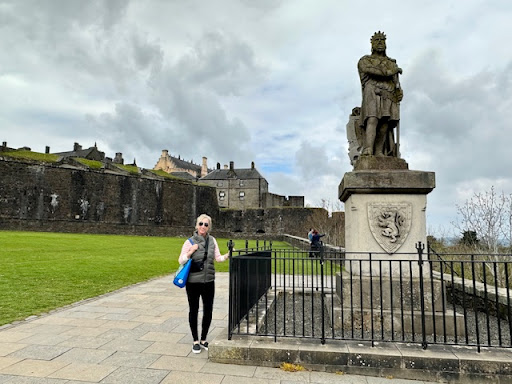
Together, Robert the Bruce and William Wallace are the most celebrated historical figures in Scotland’s history. In 1929 sculptures of these two heroes were added to the entrance of Edinburgh’s Castle. In the photo below, Robert is on the left, and Wallace is on the right.
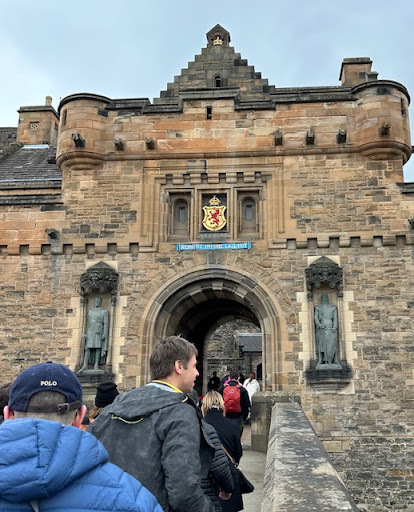
Next week’s blog will pick up on where we left off, exploring inspiring portraits of Scotland, and the traits that helped them to persevere despite adversity. In the meantime, here are some questions to consider:
- Is there something going on in your life right now that gives you a sense of purpose?
- What would be fulfilling for you to try to learn or accomplish?
- How do you want to be remembered long after you are gone?
There is no rush for answering any of these questions. Maybe something will just come to mind one day, and it will make your heart sing–knowing this is what fulfills you! I hope one take away from this blog you have gained is it is ok to fail before you succeed. To quote Angela Duckworth one more time, “Grit is living life like it’s a marathon, not a sprint.”
Barbara is an art education consultant and G3 contributing writer.

